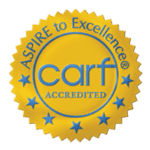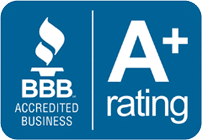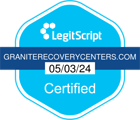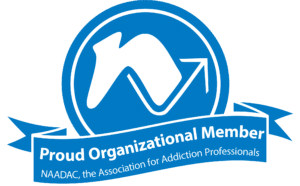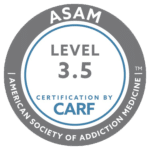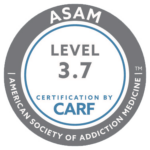Concord Addiction Treatment Resources
In 2019, the population of Concord, NH, was estimated at 43,840. It is the 3rd largest city on New Hampshire, after Manchester and Nashua. The median household income was estimated at $61,904, and the poverty rate was at 11.3% that same year. Although the Concord, NH quality of life statistics are favorable, the New England city has found itself right in the middle of the drug overdose epidemic that has overtaken the United States for several years.
Those suffering from an addiction to drugs of any kind or are currently abusing alcohol should know that Concord and New Hampshire have taken a proactive stance to help those who are searching for treatment.
The city of Concord in New Hampshire has been struggling with the drug overdose epidemic along with other cities and states in the New England area of the United States. In 2019, there were 415 opioid overdose deaths in the state of New Hampshire, which was a decline from the year prior. There was, however, an increase in the use synthetic opioids other than methadone in those deaths. The main culprit was fentanyl. People dying due to opioid prescriptions may have fallen because providers are writing less prescriptions.
New Hampshire Drug Use Statistics
New Hampshire’s Office of Chief Medical Examiner also released data for the number of deaths in the state through December 2019. Among six cities, Concord was not the highest, but it did come in fourth behind Manchester, Nashua and Rochester.
New Hampshire and Concord officials have continued to study the overdose situation. In July 2019, it was reported that the cause of more overdose deaths was actually due to the mixing of drugs. Often, it was fentanyl mixed with something else.
The mixing of substances has made it more difficult for those involved with responding to overdose cases more difficult. New Hampshire trained medical professionals and responders to give individuals doses of Narcan, which reserves the symptoms of overdose. This is a medical treatment that targets opioid overdoses, though, so its effects are less powerful now that opioids are no longer the main cause.
Plus, there is the resistance of those who need help the most. New Hampshire has enacted the good Samaritan law. Anyone who witnesses an overdose can call it in, no questions asked. While this helps responders save lives, it does not give them the ability to investigate the overdose. Responders, therefore, have to wait for a new opportunity to investigate the source of the flow of these illegal substances. Nonetheless, it has been a good start for both the city of Concord and New Hampshire.
In 2019, there were 70,980 drug overdose deaths. Of those deaths, 50,042 involved an opioid or illicit opioid. The bulk of the deaths have occurred with individuals who are between the ages of 25 and 54, so this is not a disease that is impacting only one demographic. Now that professionals in the medical industry are tracking this information in an improved manner, they believe that they are getting a handle on the situation for the better.
Getting Help for Drug and Alcohol Addiction
In Concord, NH, responders have encountered situations where an individual has overdosed, and the responders are able to bring the person back. Unfortunately, the victim is upset instead of grateful for being given the opportunity to continue to live.
Whether or not you decide to get help is your decision 100%. All treatment unless ordered by a court of law is voluntary. So, you have to be motivated to want to get better. You also have to be motivated to overcome the disease. Otherwise, if you do get help, a relapse is possible.
Those who are motivated should know that help is available. Sometimes it is free of cost. Other times, you may be able to qualify for insurance that covers the costs or programs that cover the fees. It depends, but you have to seek out the help first.
Individuals struggling with addiction can face problems in a number of areas in their lives. When a person loses the fight against their addiction, maintaining responsibilities, keeping up with bills and nurturing relationships is not easy.
Individuals struggling with an addiction are encouraged to get help. It is as easy as walking into the local hospital or clinic and asking for it. After a consultation and diagnosis, a course of action and treatment can be recommended. Getting help with your addiction can save your life. Not to mention, addiction comes with many health issues, including:
- Cardiovascular disease
- Stroke
- Cancer
- Lung disease
- Mental disorders
A person who successfully completes rehab treatment will stop using drugs, remain drug-free and be a productive member of their family, workplace and society once again.
It’s important that rehab facilitates emphasize that treatment is not a one size fits all solution. Every person requires a different approach to treating their addiction. Typically, a diagnosis and consultation are the first steps on the road to recovery. If there are any underlying mental health issues, they must be treated too. Detox is the first step, and it requires using medication to slowly get your body accustomed to being without the drug. Keep in mind that therapy is required afterwards to deal with the underlying causes of drug misuse.
New Freedom Academy
New Freedom Academy is located in Canterbury, NH, in a secluded location. Patients can expect to be within the countryside and mountains of New Hampshire. The property spans 17 acres. There are only 20 beds available at a time, so you can be confident that you are going to receive the attention and care you require. The low client-to-clinician and staff-to-client ratio ensures that no one falls through the cracks. If someone has an episode or incurs a sudden issue, there is staff to help.
This center takes an evidence-based approach to a patient’s treatment plan. This includes one-on-one individual therapy, treatment for co-occurring mental disorders and motivational interviewing. Cognitive behavioral therapy, dialectical behavior therapy and grief and loss therapy are all available for those who need them.
Additional features, benefits and amenities include:
- Medication assisted treatment
- Gender-separate living accommodations
- Access to weekly off-site family recovery workshops
- Nutritious chef-prepared meals
- Meditation and yoga
- Activity outings
Green Mountain Treatment Center
Green Mountain Treatment Center is located in Effingham, NH, and it is situated within the hills, too. It offers patients scenic views of New Hampshire’s White Mountains as well as the Lakes Region. The property is secluded and among nature. The quiet environment is helpful for those recovering from an addiction because you are less likely to be triggered by stress or anxiety. The center is a primary residential drug rehab facility. Men and women who are over the age of 18 are admitted, but space is limited. The limited space keeps the staff-to-patient ratio low, which is a valuable benefit.
The focus of this facility is the 12-step curriculum, and patients are walked through the steps with professional staff members. The curriculum is integrated with other therapies and treatments such as:
- Individualized treatment plan
- Client-to-client program
- Medical detox
- Evidence-based clinical therapies
- Holistic therapies
Amenities include:
- Meditation and yoga
- Nutritious chef-prepared meals
- On-site gym
- Transportation as needed
It is never too late to ask for help with your addiction. If you are in an emergency situation, you are encouraged to seek help by visiting a hospital or clinic. Getting clean is how you get your life back.


